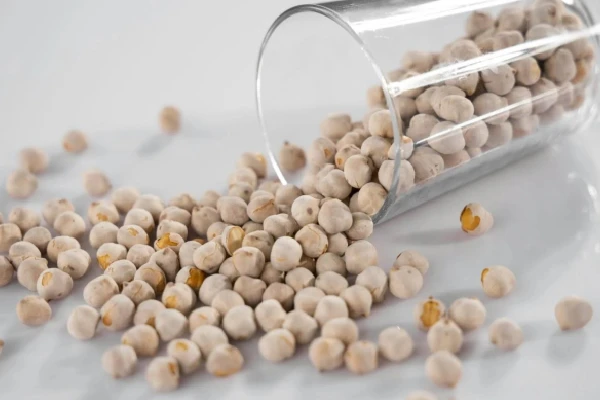How to Know for Certain if Your Symptoms Point To Candida Overgrowth
Friday Apr 28, 2023

Do you suspect you might be experiencing Candida overgrowth ? What is Candida overgrowth, and what do symptoms look like? Chances are, you've heard the term Candida before. In fact, there are a lot of misconceptions around Candida, symptoms of an overgrowth, and our microbiome and what microflora are made up of.
What is Candida?
Candida is a yeast, which is a type of fungus. It's generally considered a commensal microbe, living peacefully with your natural microbiota and subject to hormones, diet, infections and environment.
Candida flourishes in several areas of the body including:
- Your gut
- Mouth (aka oral thrush)
- Throat
- Skin
- Genitals
If your microbiota is balanced you may never notice the presence of candida in your system.
But when there is a Candida overgrowth , it can lead to a wide range of symptoms that can be both uncomfortable and troubling. So, what are your options? For some women, Candida overgrowth in vaginal yeast infections can be caused by a hormonal imbalance with symptoms recurring and cyclical. For others, the cause can be attributed to an identifiable course of antibiotics that have killed off both bad and good bacteria. In this article, we'll discuss the symptoms of Candida overgrowth and the tests that can be used to diagnose it. We'll also talk about how to treat Candida if you do have it, so stay tuned.
Candida overgrowth symptoms
Candida overgrowth can cause a variety of symptoms, and some of these may be different depending on where the overgrowth occurs in the body. Some of the common symptoms of Candida overgrowth include:
- Gut-related and digestive health issues like constipation, diarrhea, bloating and abdominal pain.
- Recurring vaginal yeast infections: 75 out of 100 women will have a vaginal yeast infection at least once in their lives and are most common in women of child-bearing age . Diet and lifestyle can have huge impacts on the frequency of these imbalances and can be further supported by taking probiotics, both in food and in a daily supplement.
- Other names include vaginal candidiasis, vulvovaginal candidiasis, or candidal vaginitis.
- Burning while peeing or genital itching or discharge
- Skin problems , which are commonly linked to poor gut health..
- White or yellow tint to the tongue that is accompanied by redness, swelling or pain while swallowing (also known as thrush)
- Mood or mental health changes that can include depression, anxiety or just feeling out of it.
Some of these symptoms are common immune responses and it's best to look to science to find the root cause of your imbalances. The only way to know for sure if your symptoms are caused by Candida overgrowth is to take a test.
So you think you have an imbalance: is it Candida overgrowth, and what can you do to address it? Seeing a physician is recommended to rule out obvious infections like thrush or vaginal yeast infections but often, the only way to stop recurring imbalances is to ensure an optimum blend of nutrients, pre and probiotics and lifestyle choices for the health of our microbiome and overall wellness.
Different tests for Candida overgrowth
If you suspect that you may have Candida overgrowth, there are a few different tests that can be used to identify it. These include: There are four different methods of Candida testing available:
1. Stool Test - analyzes a stool sample to look for overgrowth of Candida in the gut.
Everyone's favorite: poop! Can a stool test detect Candida? You bet it can! An easy and informative method to conduct in the privacy of your own home, a Floré Gut Health Test test can not only tell you if you have a Candida overgrowth, but can also point to insights on over 23,000+ microbes in the gut, which include fungus, bacteria, yeast, viruses and parasites.
Step 1: We send a Gut Health Test Kit directly to you. Once you collect your sample and send it back to us, our dedicated team of Floré Scientists extract your DNA from your sample and analyze your microbiome, unlocking the secrets of your gut!
Step 2: More than just a Candida test, your results come with a custom report and tailored blend of synbiotics - that's pre and probiotics depending on your individual needs - to help align potential imbalances in your gut and help keep your digestive system running smoothly
Step 3: You have the option to consult with a Floré Scientist who will personally walk you through your gut health report.
Signs of Candida in your stool
In case you're tempted to inspect your sample yourself, there aren't really any signs or symptoms that can be seen with the naked eye. You can however tell a lot from the color of your poop! Your stool might be a variety of different colors and textures having little to do with Candida overgrowth (apart from that potential pesky diarrhea symptom we talked about above). Your poop could be green, brown, or have a yellowish-looking color, do you know which ones are not considered cause for alarm?
2. Candida Blood Test - checks for the presence of Candida antibodies in the bloodstream, which can be a sign of systemic Candida overgrowth.
This test requires a trip to your doctor. A blood test takes a look at your antibodies, specifically, a blood test for Candida overgrowth looks for certain markers such as a certain carbohydrate nested in the cells of Candida species. One non-culture based method checks for the presence of mannan antigen and anti-mannan antibodies in the diagnosis of invasive candidiasis. There are some questions regarding accuracy, as high antibody levels can indicate causes other than a current Candida overgrowth or that your immune system has been triggered into making antibodies to fight normal Candida levels. For some people, this kind of test confirms that they have had an imbalance in the past but doesn't help root out the cause of the imbalance, or if it is currently imbalanced.
3. Urine Candida Test - analyzes a urine sample to check for the presence of Candida overgrowth in the kidneys, bladder, or urinary tract.
Urine tests, also known as Organic Acid Tests , measure the levels of organic compounds in urine that are produced in the body as a part of many vital biochemical pathways. In other words, this test checks for yeast and bacteria that would indicate Candida overgrowth. The downside is that while it may indicate an overgrowth, it can't tell you where it might be occurring (skin, gut, mouth, vaginal canal, etc).
4. Saliva Candida Test - checks for the presence of Candida overgrowth in the mouth.
This type of Candida test is done to pinpoint Candida in the mouth, aka oral thrush. A doctor may take a saliva sample to be sent to a lab for examination. But most of the time, they'll be able to tell just by looking at your mouth (i.e. your tongue may have a white or yellowish color to it and would be red and swollen).

How to treat Candida
So your test for Candida overgrowth came back positive. Now what? The first step is incorporating foods into your diet that will help your gut rebound and foster an environment for beneficial bacteria to thrive. Probiotics can help to restore the balance of beneficial bacteria in the gut, which can help to keep Candida under control. Focus on non-starchy vegetables, foods high in probiotics (yogurt, kombucha, sauerkraut), and gluten-free grains like quinoa and oat bran
Once a diagnosis of Candida overgrowth has been made, there are a variety of treatments that may be recommended by your healthcare provider.
However, not all food sources are created equal and it can be difficult to ensure quality nutrients make it into our systems. A simple way to deliver these nutrients in the desired density is by enlisting the use of a pre and or probiotic supplement to encourage a proper balance of friendly bacteria in your gut and lessen the likelihood of another repeat episode with Candida overgrowth. And it's hard to know exactly which probiotic strains are needed and which prebiotic fiber is needed to feed them.
Probiotics have long been considered a necessary supplement for female reproductive health and research indicates favorable outcomes for the use of probiotic supplements against Candida overgrowth. Over the course of this 6-month study , a probiotic supplement was used to treat women with recurring vaginal yeast infections. 7% of those who took probiotics experienced a recurring yeast infection while 36% of the non-probiotic group experienced a recurring yeast infection
Other options for treating Candida overgrowth include:
Antifungal Medications - Prescription antifungal medications such as fluconazole, nystatin, and ketoconazole are often used to treat Candida overgrowth.

Diet Changes - Some healthcare providers recommend a Candida diet, which typically involves eliminating sugar and other carbohydrates that can feed Candida but this has been debunked as a myth, and focusing on foods that promote gut health as outlined above. (link to recipe? ) If you're looking for even more ways to improve your gut health, here's how fermented foods can help!
Lifestyle Changes - Lastly, lifestyle changes such as stress reduction and getting enough sleep can also be helpful in managing Candida overgrowth. Another important factor is wearing non restrictive, cotton underwear and avoiding synthetic or tight fitting pants and changing out of damp clothing as soon as possible.
Candida test wrap up
If you suspect you might have Candida overgrowth, it's probably best to get a Candida test. To recap, there are 4 main types to consider when it comes to tests for Candida overgrowth:
- Stool test for Candida
- Blood test
- Urine test
- Saliva test (which tests for Candida of the mouth, aka oral thrush, specifically).
If you're looking for even more ways to improve your gut health, proactive and preventative measures such as taking a daily probiotics can help keep both our good and bad bacteria in harmonious balance.
About the Author
Chad Richardson is a freelance writer from Cincinnati, OH who also enjoys going to the gym and doing his best Arnold Schwarzenegger impersonation, scrolling through Netflix trying to find a new binge-worthy show, and catching a game to root on his hometown sports teams.



